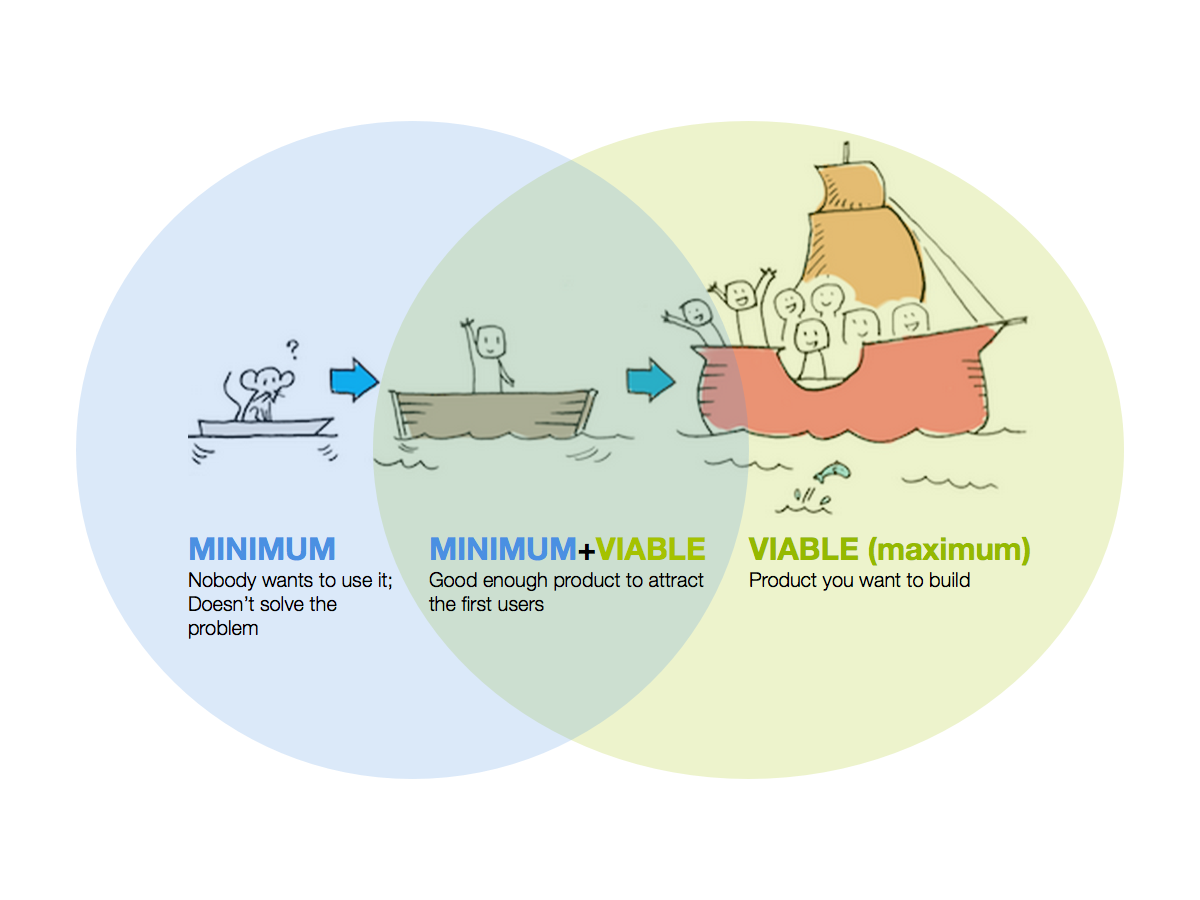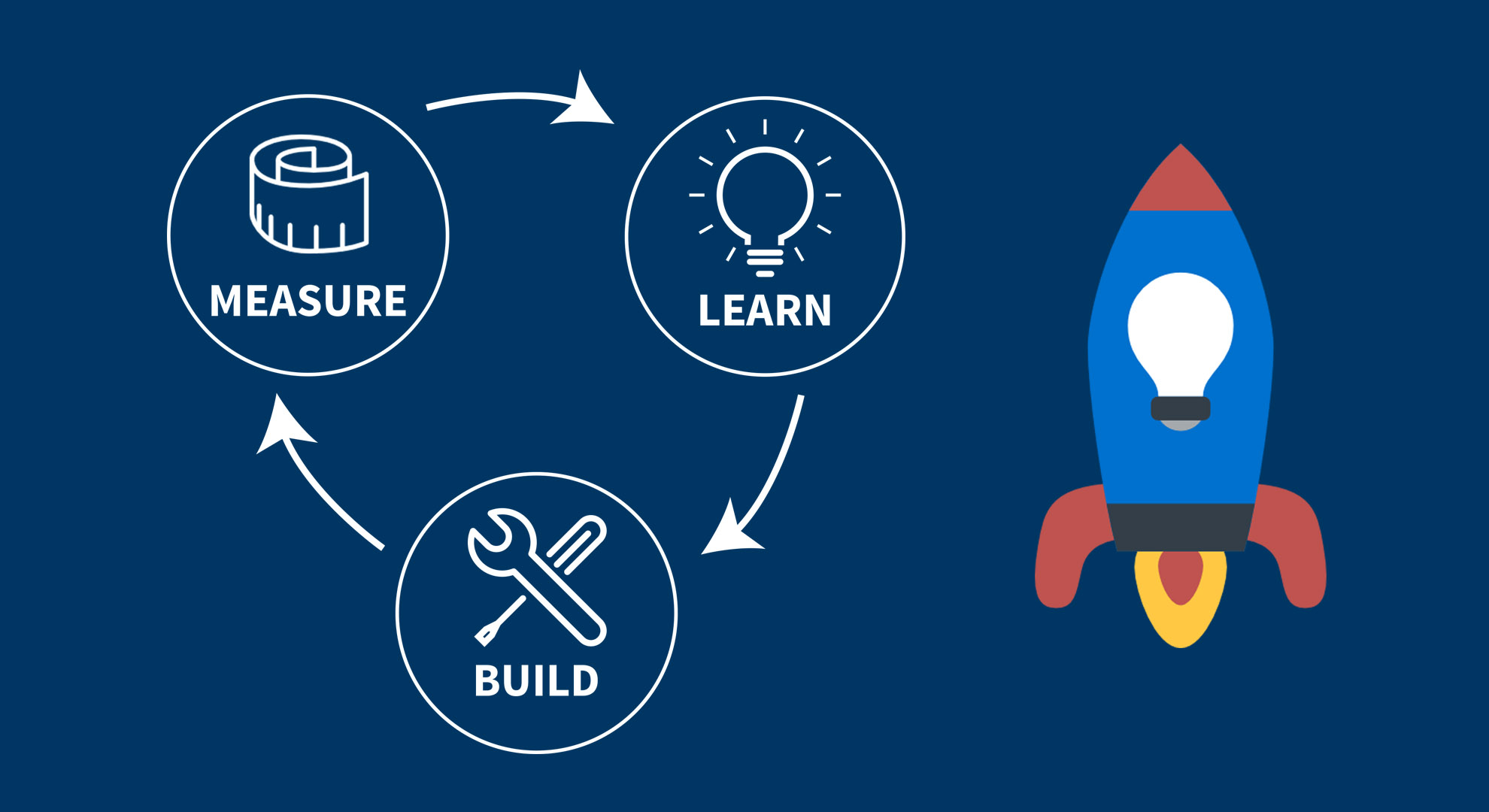What is the MVP?
Are you ready with presenting your idea to the world and sure that it will strike your target audience? Then it’s time to start working on it! But be careful. Trying to implement all advanced features at the very beginning isn’t a good practice. You can spend too much time and money on polishing the product, without seeing its demand.

MVP (Minimum viable product) is a version of a new product which allows collecting the maximum amount of validated learning with the least effort. It means that you can launch and test your product with a minimum set of core features and a saved budget. Having built the MVP, you can start attracting customers and expanding the marketplace. Try to define early adopters and their needs. After working with your app, they will provide invaluable information about your product. If some features happen to be unpopular, you will be able to stop working on them at an early stage. Listen attentively to customers input, react and make improvements. After that, you should talk to them again to find out whether all issues were solved.
Also, if you see that customers are not satisfied with your product and aren’t willing to pay for it, then there is no point in investing more money and time.
Be prepared to:
- Extra work and commitment
Creating an MVP for an online marketplace definitely takes less time than building a full-fledged app. But when MVP is launched, you will have to dedicate some extra time to gather feedback, analyze it and think over your next steps. - Establishing core features
Remember, that MVP is about building a working product with a minimum set of really valuable features. And you are the one who has to define which features will be the most valuable.
How to start an online Marketplace MVP
Online marketplaces can be released with numerous features like personalized accounts, listings, search, reliable payment system, messaging channel, and so on. They all seem to be very important and crucial, but you can’t implement them all into the MVP. So how to choose what will take the house?

Identify the problem you want to solve
Start by putting yourself in customers’ shoes. You can do it by asking yourself simple questions: Why do I need this product? How will it help me? After answering these questions you will better understand the main aim of your product. But why would actually people use your product? You need to find a customers’ problem which you can solve. Could you do anything better for them? Do you need the right tool for this? Could you build this tool?
If it’s impossible to find a problem this way, then try to examine a particular market segment.
Describe user flow
When describing the user flow, you should think about the main goal of your product. For example, for the beauty service marketplace, it’s selling beauty services.
You should define process stages in order to see the user flow. For this, describe the steps necessary to reach the main goal. And remember, this is not about features. For example, “find beauty experts”, “contact beauty experts”, “arrange the appointment”. Only having all the stages defined, you can start thinking about features for each of them.
Rank the features
Prepare the list of all necessary and desired features for every stage. You might even mark those ones, which are not necessary, but nice to have. Then start prioritizing:
- Define the most important action you want your users to accomplish. Correspond it with a relevant feature.
- Decide what other features you want to implement. When the list is ready, cross out the most unnecessary ones.
- Divide features by process stages. For each stage find out the most important one. Divide them all up to these criteria: must-have, nice-to-have, don’t-care. Also, visualize it by creating a scheme with the main process stages and features related to it. Features should be arranged up to their priority. It will help you to see the core features of your product and to define the scope for the MVP.
Mistakes that can be avoided
Building MVP for an online marketplace is a widely used approach nowadays. Still, entrepreneurs make mistakes and mess their business up.

The most common mistakes are:
Neglecting proper feedback
You are creating the product for people and their attitude is a key element. At the very beginning, it is extremely important to see how people use your product. If you have a chance, sit near the person testing your app and observe what he/she is doing. You can also ask people to share the screen. Also, ask for verbal feedback: what people see and expect from the app.
When they tell you that everything is going smoothly – don’t put on airs and keep improving your product. Also, don’t ignore their signals about having issues with your product and try to eliminate them.
Trying to build a perfect marketplace app
Usually, entrepreneurs release only perfectly made product with a wide set of advanced features. As a result, they spend time and money, but can’t attract users to use the app. MVP helps to see customers’ reactions and understand whether the product has potential. And if nobody needs your product, cool features or beautiful design will not help.
Excessive savings
Don’t expect that you will not spend money on building MVP and save a lot. If you decided to produce a slapdash MVP, it could eventually cost you more than you expected. It’s better to build a simple, but reliable minimum viable product. Minimum doesn’t mean that the product should be of low quality or underdone. It should provide users with the main idea of your product. At the same time, it implies a minimum investment risk. There is no point in creating a beautiful platform full of bugs, unable to respond to customers’ requests. Moreover, users will spend money on your MVP. So make sure that their data and financial information are 100% protected. It’s necessary to spend as much money as needed on implementing a secure anti-scam payment system.
Obsession with your idea
Your idea may seem perfect to you, but do not get tricked by it. It can influence your understanding of how things are really going. It’s clear that every tiniest feature is valuable. But if users tell you that this element is useless, don’t hesitate to drop it. Save this idea, maybe the time will come when you will use it. So listen to people around you, to customers, people who work in your industry, developers, and testers. Be flexible and it will help you to avoid mistakes.
The Chicken and Egg Problem
At the very beginning, every marketplace faces the chicken and egg problem. It’s the hardest issue that you have to overcome while launching an online marketplace. Who to attract first? Buyers or sellers? How to attract buyers when there are no sellers? And on the other hand, how to attract sellers when you don’t have buyers? The marketplace needs to have both buyers and providers of goods, but one won’t come without the other. So what to do?

There are different ways to solve this problem. For example, building MVP allows having a ready for the market version of the product with the basic features and saving of money. You can invest this money on following online marketplace development.
Start with focusing on small. You can begin with targeting a single city or area or even with a neighborhood. Targeting a small area lets you spend less on marketing as you have to embrace a smaller number of customers. It’s also reasonable to get sellers in this area first. Advertise the marketplace to sellers and explain all the advantages they will get. This is also a meaningful choice because if customers start using a marketplace that lacks products and services, they will leave. Customers want to get services or goods immediately. Sellers, unlike them, can wait as they will not lose more in case of a short delay. With an established base of sellers, it’s time to get buyers to use your marketplace platform. When you prove your model to both suppliers and buyers, start expanding gradually, building two communities in parallel.
For example, our team worked on MVP app for US marketplace startup in the beauty industry. Its founder started the campaign by targeting sellers of beauty service in his city of living (Los Angeles). When the user base was established, he started to add new cities and areas, such as San Francisco, Las Vegas.

Always remember to follow the Build-Measure-Learn rule. It’s vital for Startups to follow this cycle: turn ideas into ready product, measure customers feedback, and decide whether they need to pivot or to keep moving in the same direction. The speed of passing this loop will directly influence the growth of your business.


